Lean, also known as Purple Drank or Sizzurp, is a concoction that contains a mix of codeine and the antihistamine promethazine combined with soda, cough syrup, candy, and in some cases, alcohol.
Mixing codeine with other substances poses a great risk to those who consume lean. Lean is highly addictive and comes with serious health effects, including respiratory depression, overdose, and in some cases, death.
Lean seems to have been around since the 60s but became more popular in the late 90s when rappers started to reference it in their songs.
Since then, it has become more popular among young people, despite its negative consequences.
When consuming lean, users often report feeling mild euphoria, relaxation, sleepiness, or like they’re experiencing a dream-like state.
They also may feel dissociated from their body, causing difficulty with motor-skills.
By acting on a person’s central nervous system, lean slows down brain activity and causes sedative effects.
Lean is most commonly made from codeine and promethazine mixed with soda or candy to sweeten the taste of the beverage.
Different versions of lean can contain a cough syrup ingredient known as dextromethorphan (DXM), found in over-the-counter medications such as Delsym DM, Robitussin Nighttime, and Cough DM.
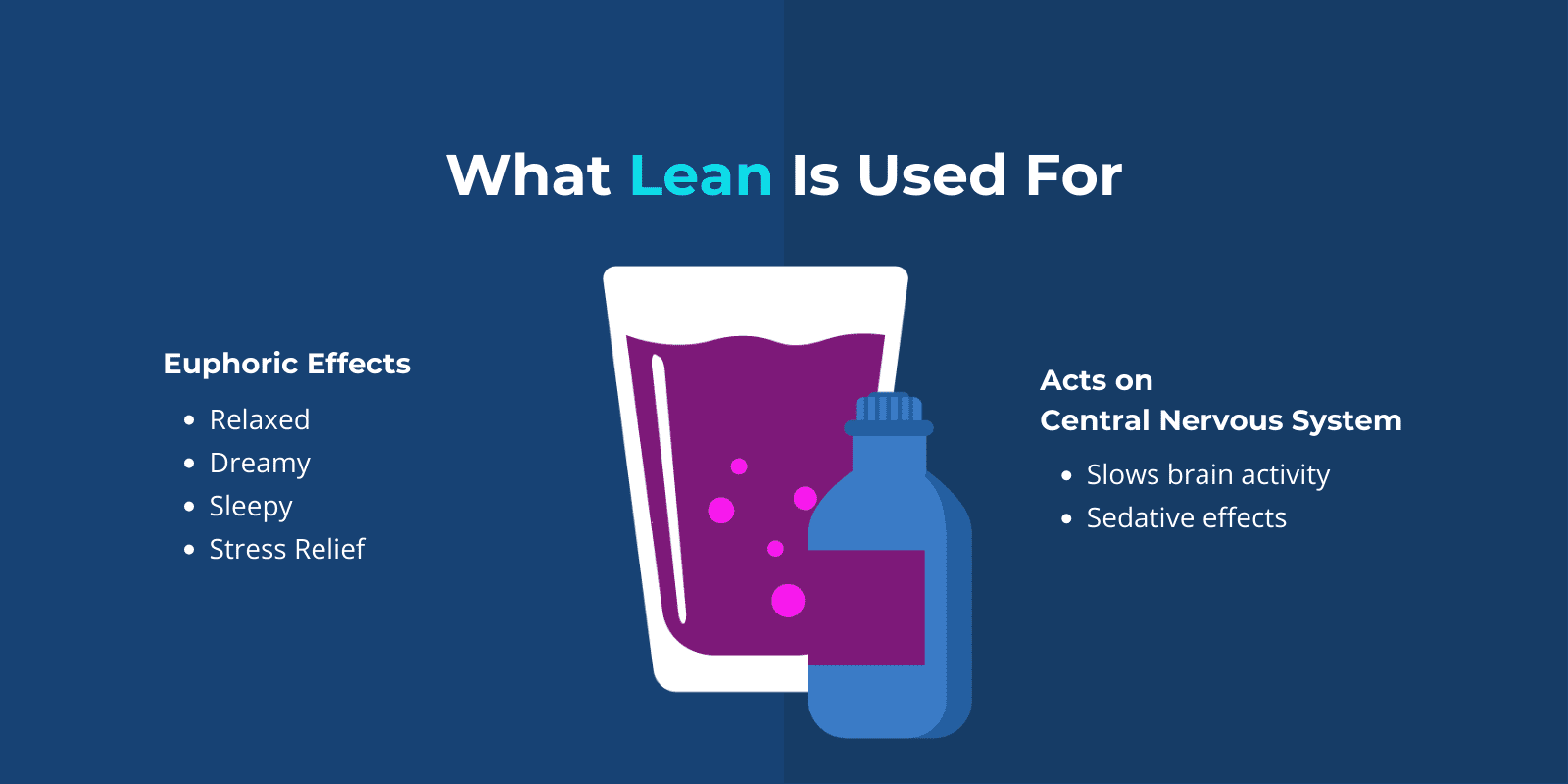
Because it is often mixed with soda or candies, lean usually has a sweet taste.
Depending on what a person mixes in it, they may taste more cough syrup, alcohol, or menthol.
Yes, lean is a drug because it contains the opioid codeine and the antihistamine promethazine.
Codeine, one of the main components of lean, is an opioid classified as a Schedule II controlled substance.
Lean is believed to have developed around the 1960s when musicians would mix Robitussin with beer.
Later in the 1900s, is when people began mixing codeine with soda and hard candy to create lean.
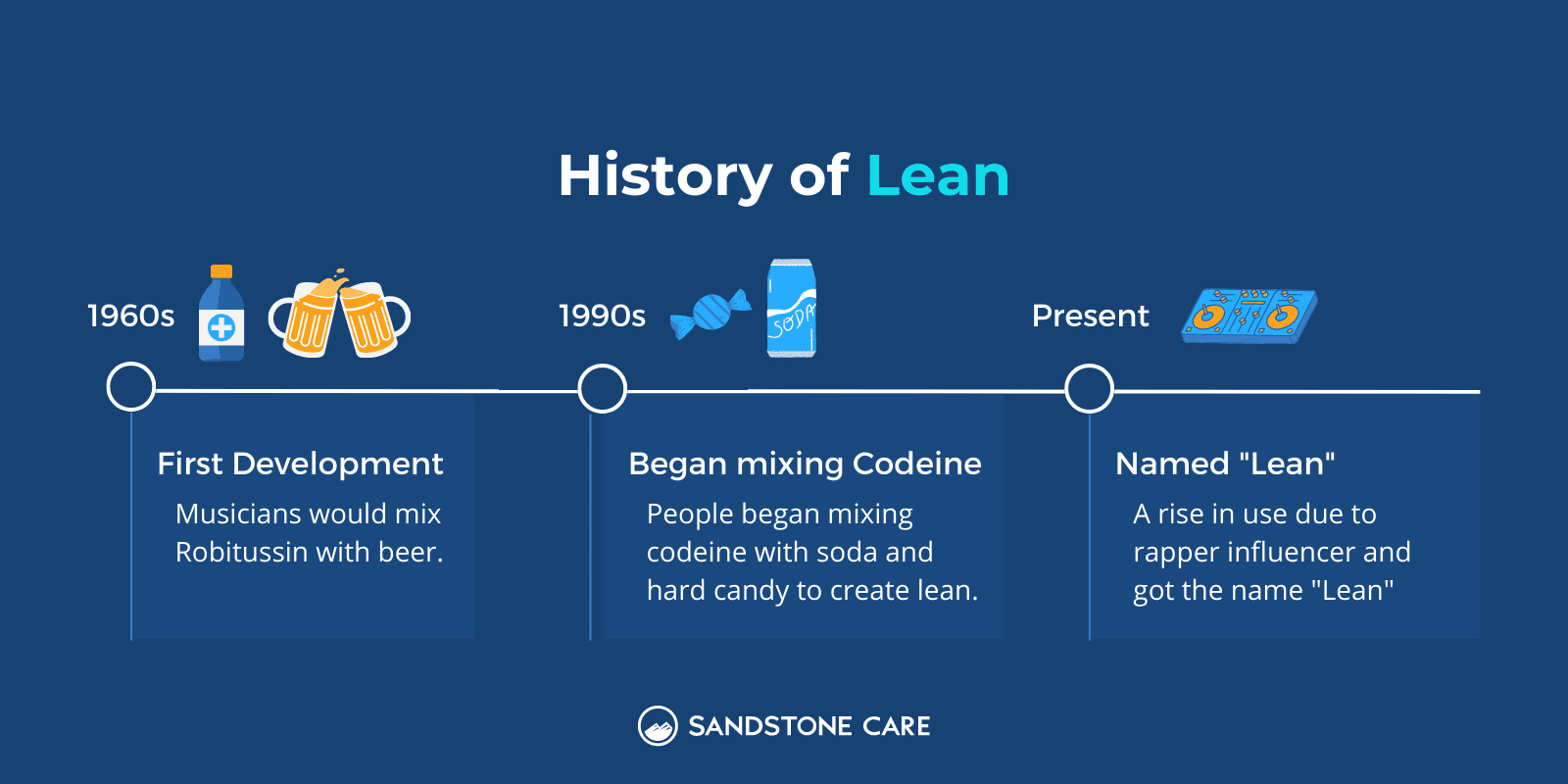
Lean is essentially liquid codeine mixed with other ingredients.
Lean is consumed in liquid form.
Yes, lean is highly addictive and has led to overdose deaths.
When a person drinks lean, it affects the brain’s reward system, causing them to seek the drug again for its pleasurable effects.
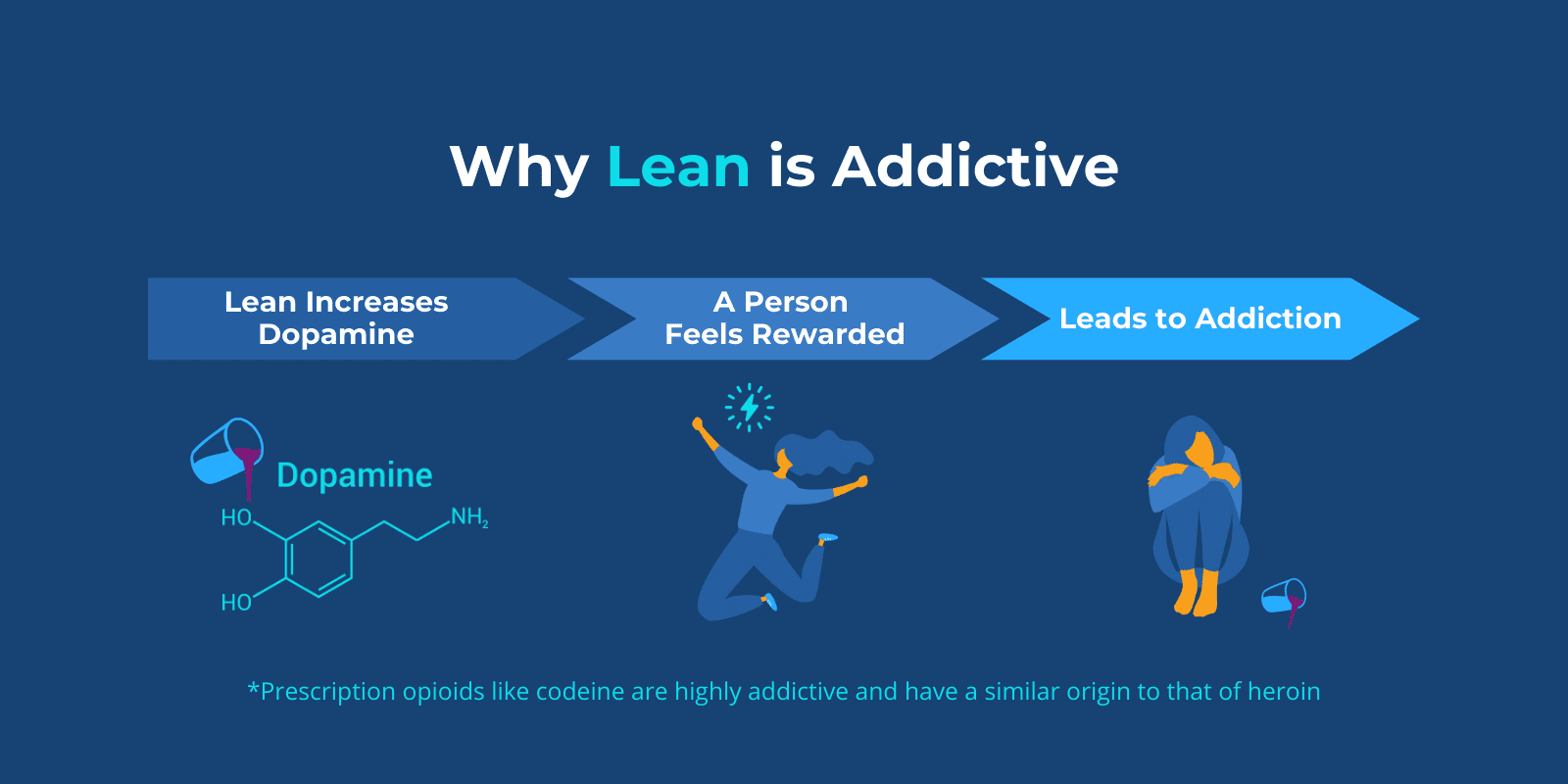
The main ingredients in lean, codeine, increase the levels of dopamine in the brain and can cause a person to feel rewarded for drinking lean, which can quickly lead to addiction.
Prescription opioids like codeine are highly addictive and have a similar origin to that of heroin.
Users who consume codeine frequently can build up a tolerance and begin to drink larger amounts of lean. This can lead to physical dependence on the drug and a higher risk of overdose. When the body becomes dependent on codeine a number of uncomfortable physical and psychological withdrawal symptoms can occur if use stops.
Feelings of euphoria, physical dependence, withdrawal symptoms, and social pressure work together to make it difficult or even dangerous for an individual to quit using lean. It’s important to seek professional help if you or a loved one are struggling with addiction to lean drink.
Opioids are considered hard drugs because of their dangerous effects and potential for addiction.
Codeine, an opioid, is one of the main components of lean.
Lean can make a person feel euphoric, relaxed, drowsy, and almost detached from the body.
However, it comes with negative and dangerous effects as well.
The ingredients in lean create sedative effects, meaning it slows down communication in the brain.
Codeine, a main component of lean, is a schedule II controlled substance, meaning it has a high potential for abuse and has limited use for medical purposes.
Many of the ingredients in lean require a prescription and have a high risk of misuse.
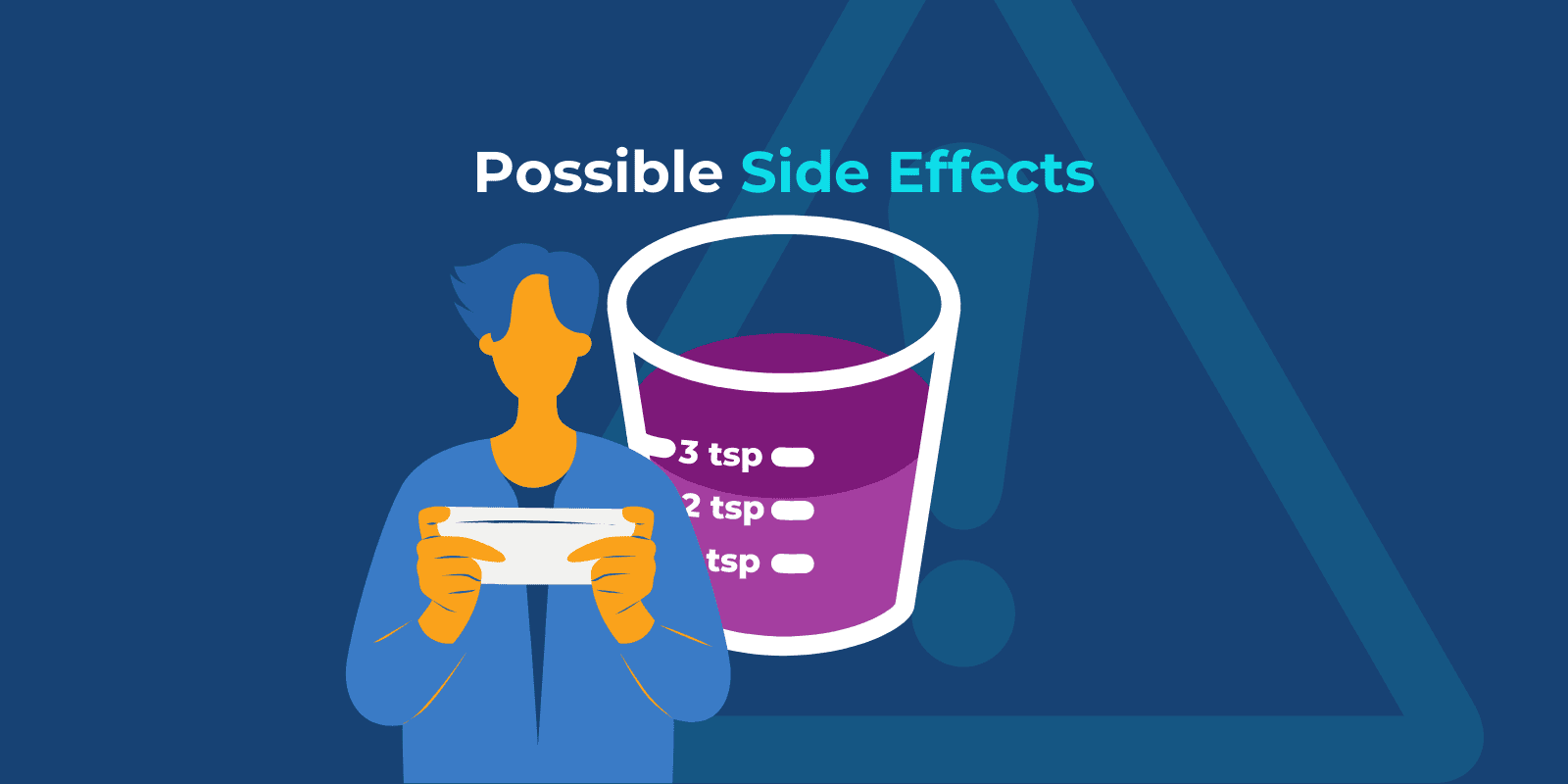
Some side effects of lean can include:
These side effects usually occur within 30 to 45 minutes of ingesting lean drink depending on the levels of ingredients used to mix the beverage. They typically peak around 1 to 2 hours after consuming the drink and will continue for 4 to 6 hours.
If side effects become extremely uncomfortable or life-threatening, you may need to seek emergency medical care.
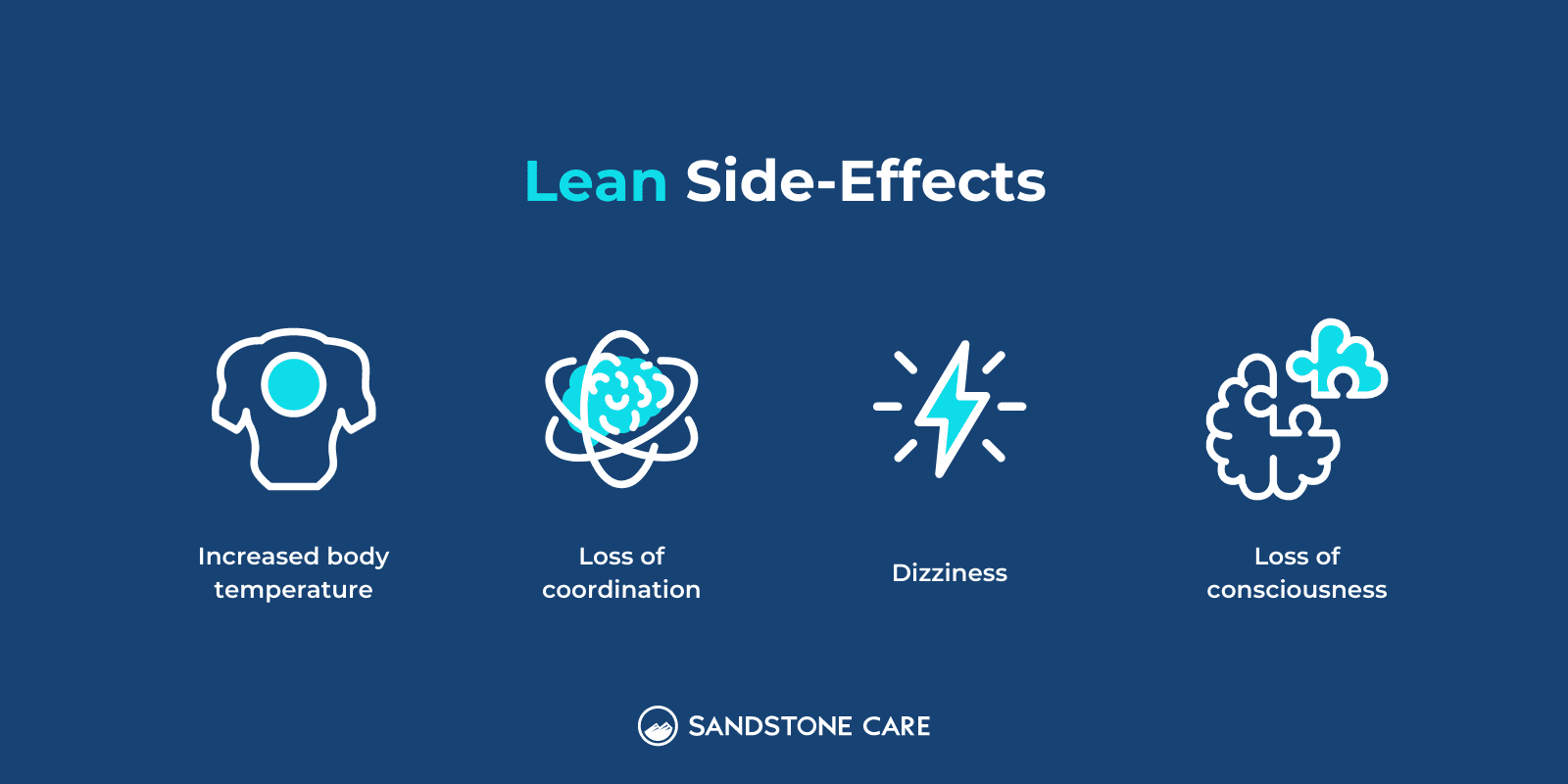
Codeine is a prescription opioid used for its sedative effects and for relieving pain.
Promethazine, another main component of lean, can also cause sedation and impaired motor skills.
When a person drinks lean, they can experience changes in their heart rhythms, breathing, temperature, and consciousness.
It can also cause severe constipation, vomiting, and seizures.
Consuming lean is dangerous and can lead to serious and sometimes life-threatening effects.
Sometimes, people add alcohol to their lean, which is extremely harmful.
Some effects of adding alcohol to lean can include:
Mixing substances, like alcohol and codeine, also increases a person’s risk of overdose.
Mixing alcohol with cough syrup can also result in respiratory depression. This can reduce the amount of oxygen that is entering the brain, which can lead to organ damage, coma, and in some cases, become fatal.
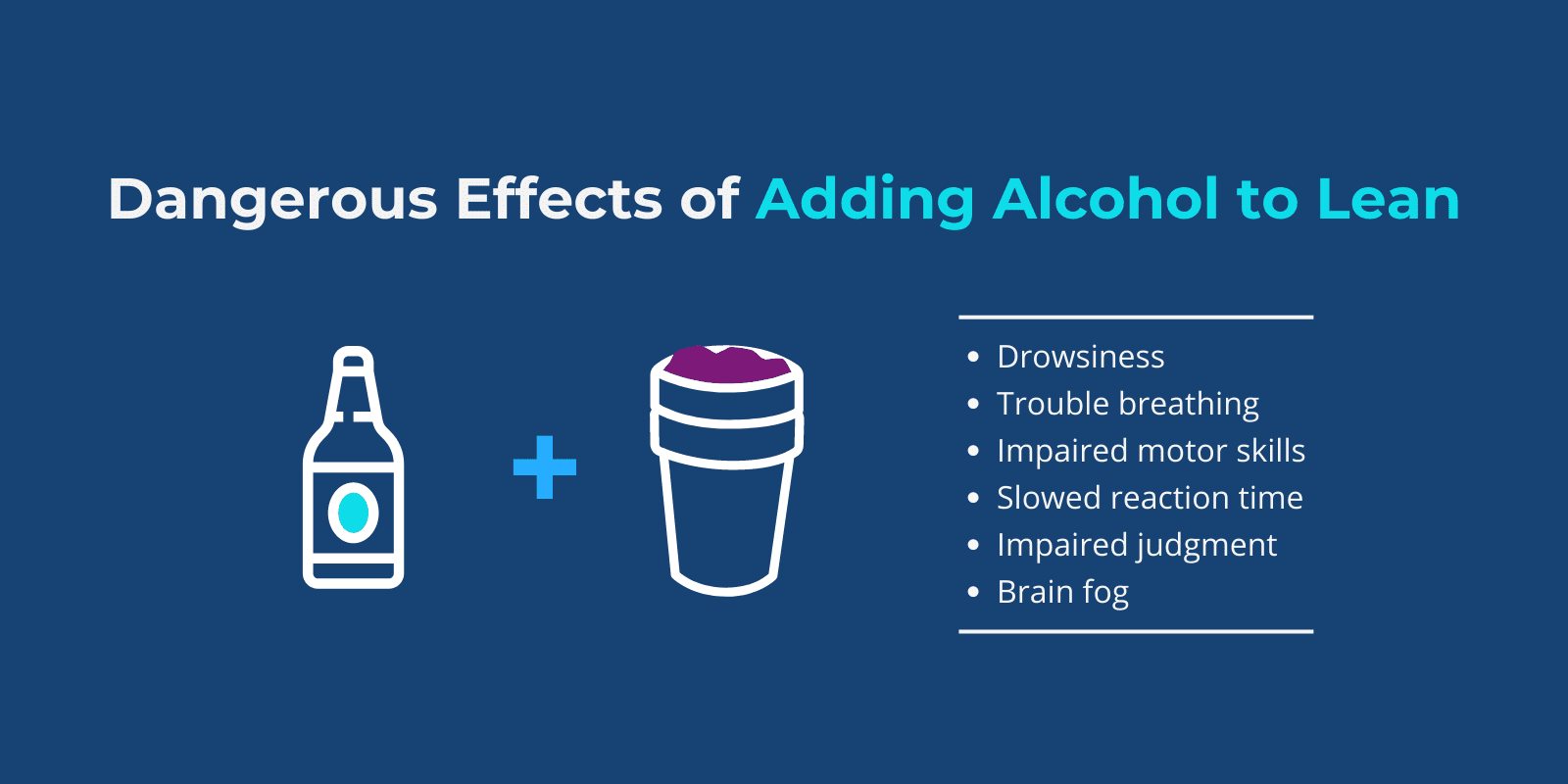
Lean can take a toll on both your physical and mental health.
Drinking lean alters the natural functions and chemicals in the brain, which can affect how a person thinks, feels, and acts.
Some people start using substances like lean to cope with difficult feelings while only worsening them over time.
When a person drinks lean, they may feel good for a temporary period of time, but after, they often experience low moods, anxiety, and irritability.

Common short-term side effects of lean abuse can include:
Lean drink abuse can lead to numerous long-term side effects, including:
When a person develops a tolerance and dependence on lean, they can also experience withdrawal symptoms that include:
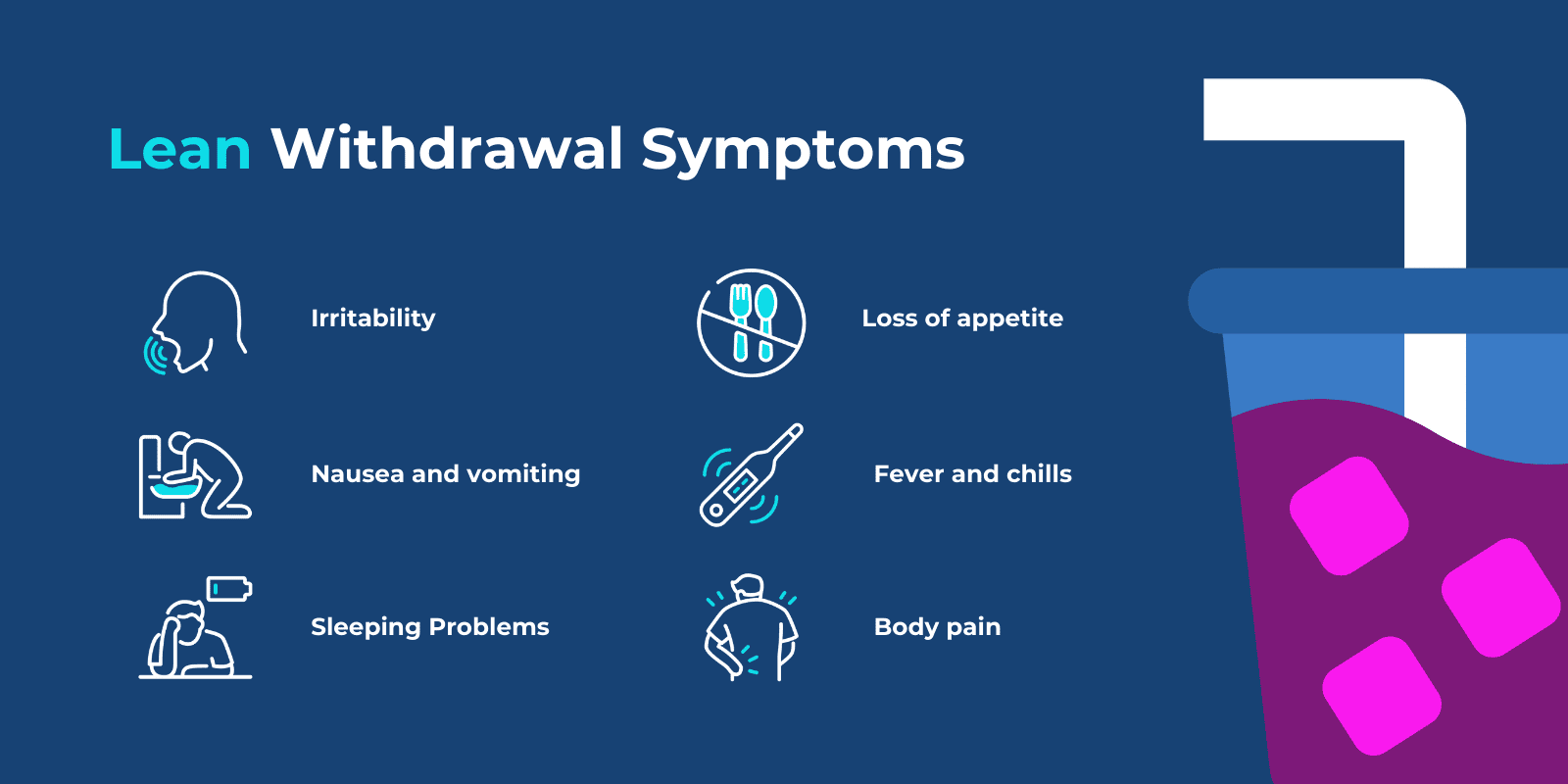
Common symptoms of a lean overdose include:
If an individual is experiencing a lean overdose it is critical to seek immediate emergency medical care as their life may be in danger. An overdose may lead to damage of the brain or other organs, coma, or death.
Lean is most commonly used by young adults, according to Addictive Behaviors.
Lean has been popular in the hip-hop music scene and used in settings like music events and electronic dance music (EDM) parties.
Individuals who drink lean may see the benefit of lean as a relaxation aid or as a way to feel happy and light.
However, these effects are only temporary. Lean is not beneficial to a person’s health and is, in fact, dangerous and damaging.
Often, the goal of drinking lean is to produce feelings of euphoria and relaxation.
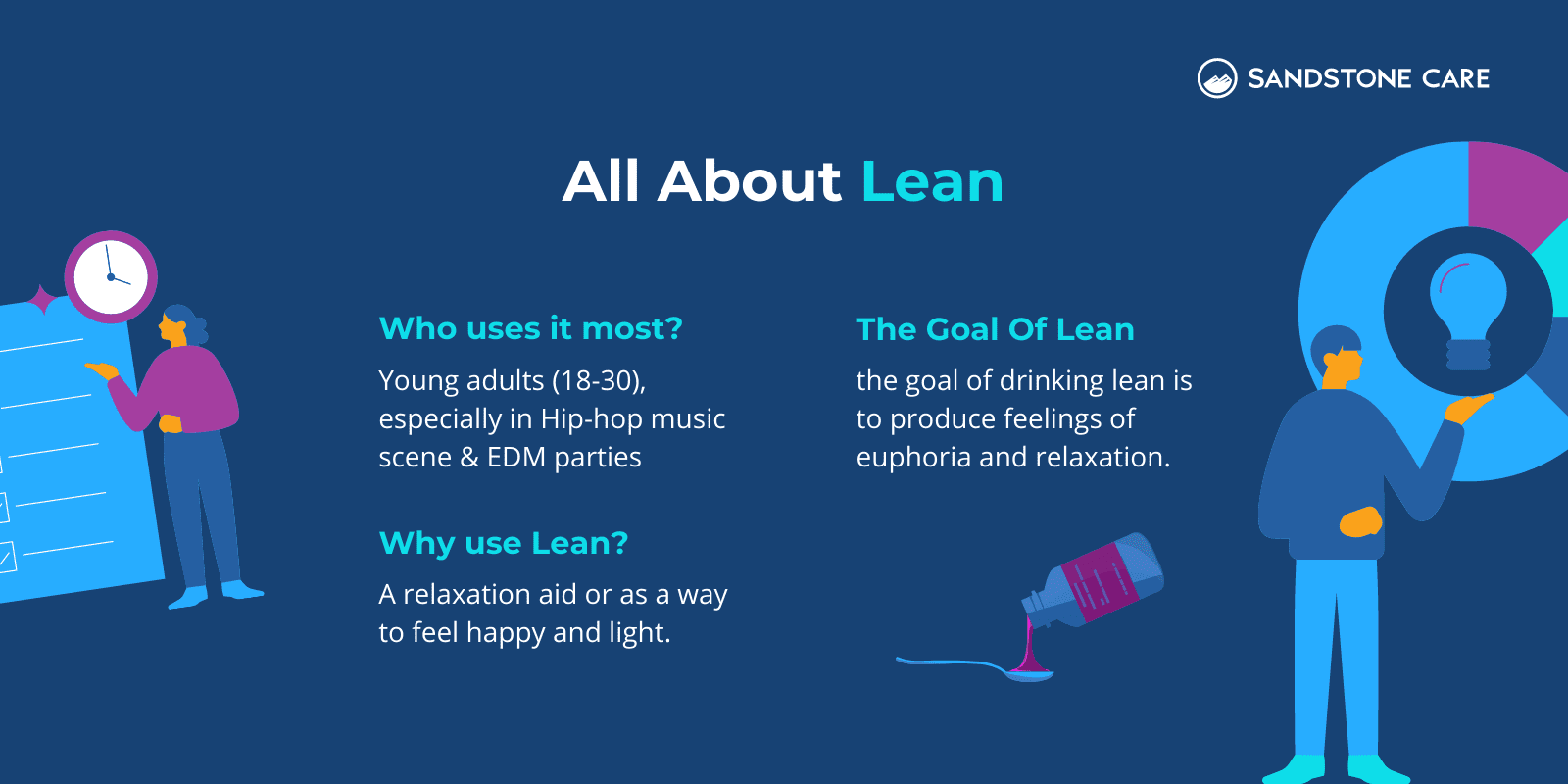
Purple drank, or Purp is another term for lean.
Other names for lean include:
The term “lean” comes from the position that people who use it commonly end up in after drinking it.
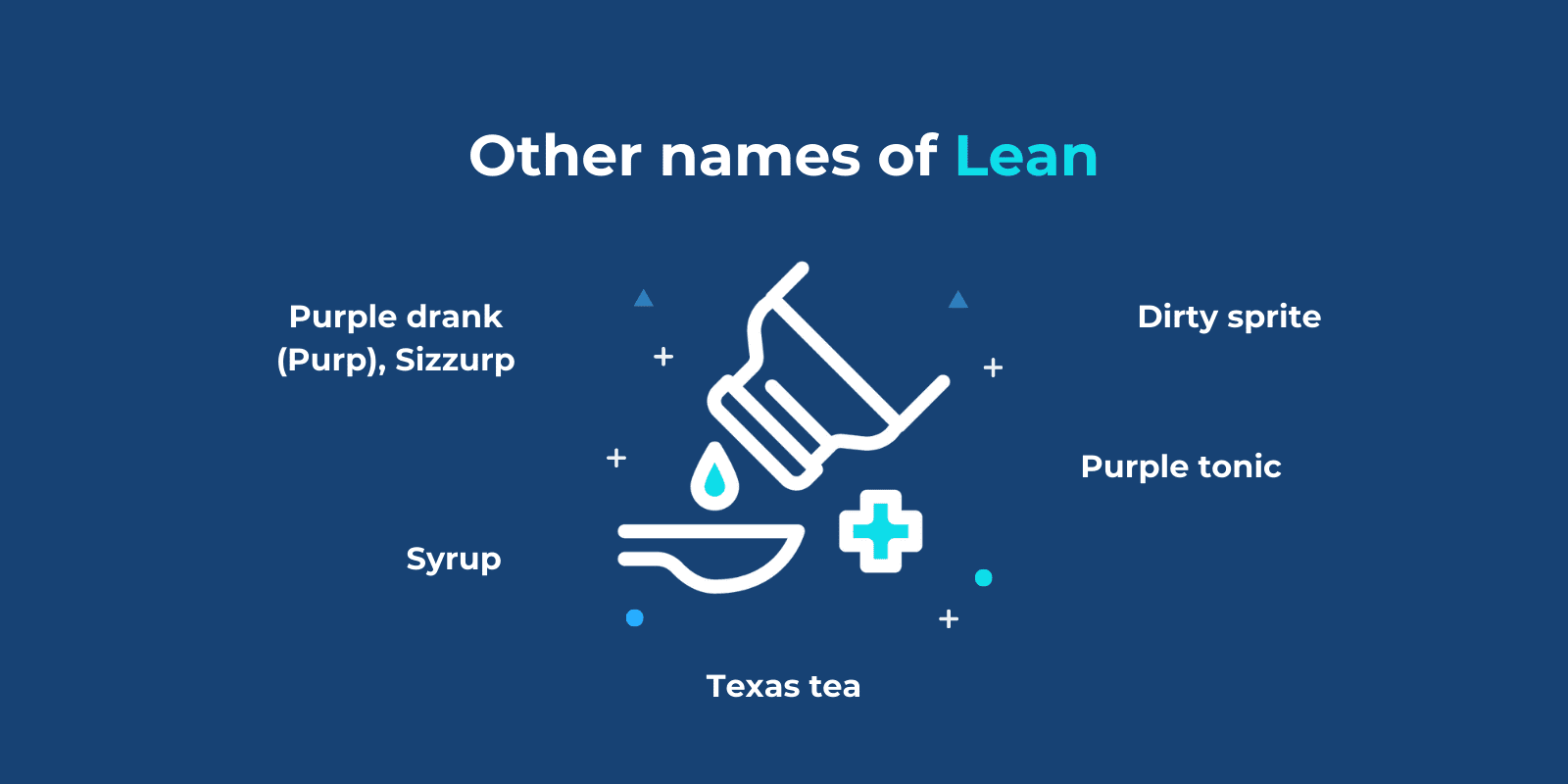
Lean got the name “purple drank” because the cough syrups that are mixed into it are often purple.
To make purple drank, people usually mix cough syrup that contains codeine and promethazine with hard candy and lemon-lime soda.
Although, it is not always purple and can vary in color.
Some people also add other ingredients, such as alcohol, juice, or melatonin.
However, it is important to be are that adding other ingredients to lean can make it even more dangerous than it already is.
Lean often has a lot of sugar because it is mixed with soda and candy.
However, even with the high amount of sugar, lean still makes a person feel drowsy because of the sedative effects of codeine and promethazine.
Purple drank can contain alcohol, caffeine, and sugar.
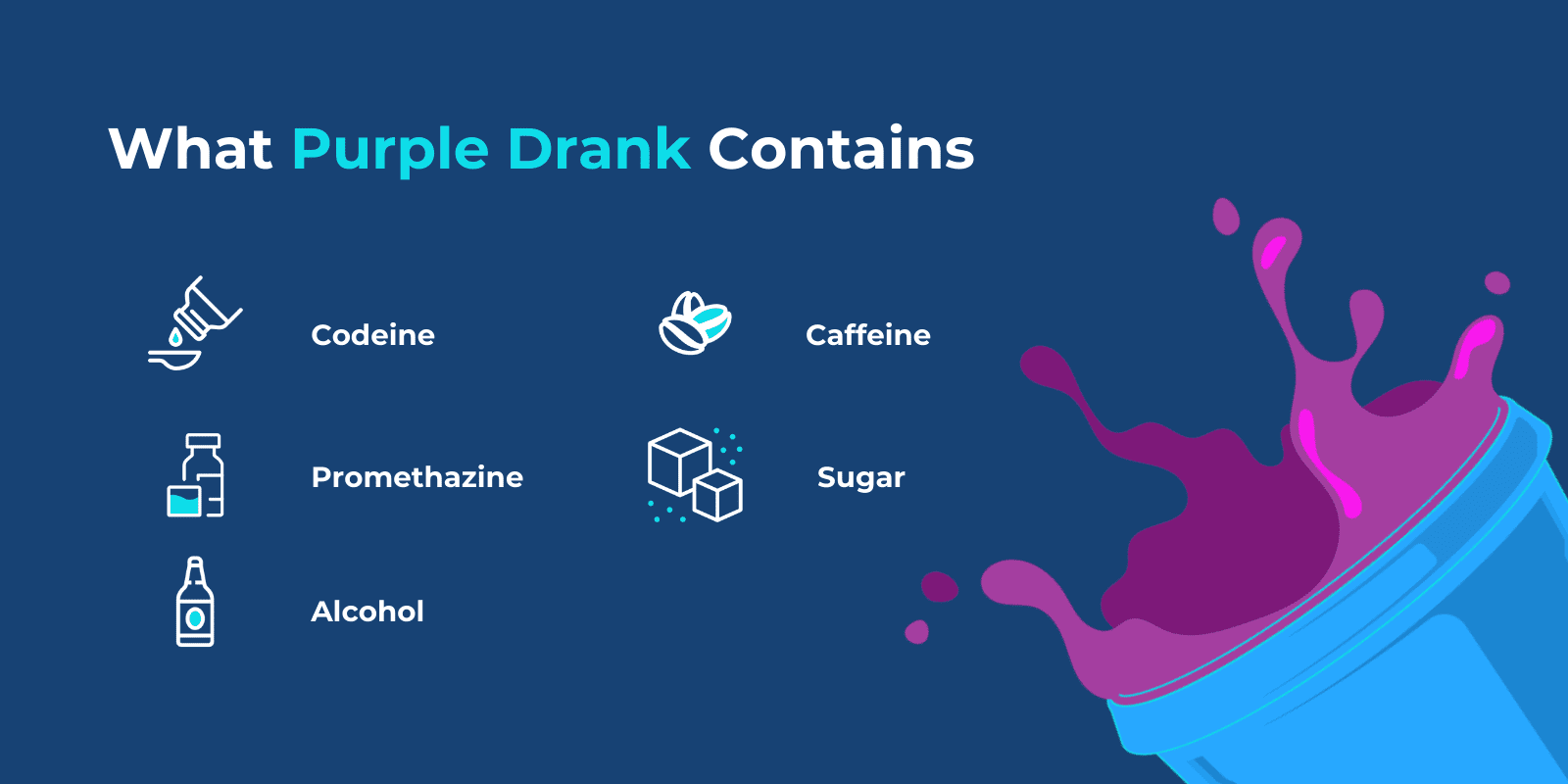
One of the main ingredients, codeine, can be found in urine for up to 48 hours after the last use of the drug. In saliva, it can be detected until around 21 hours and 10 weeks in hair.
The length of time a drug stays in a person’s system also depends on various factors, including their age, weight, how frequently they use the drug, and how high a dose they take.
A person who uses lean over time can develop a tolerance to it, meaning they need more and more of it to produce the same desired effects.
Then, a person can become dependent on it, meaning they will experience withdrawal symptoms if they stop using lean or significantly decrease their use.
Depending on the severity of addiction, withdrawal symptoms can be extremely uncomfortable or even life-threatening.
If you are experiencing withdrawal while trying to quit lean, it is important to reach out to a professional provider or rehab facility in order to protect your health and encourage long-term recovery.
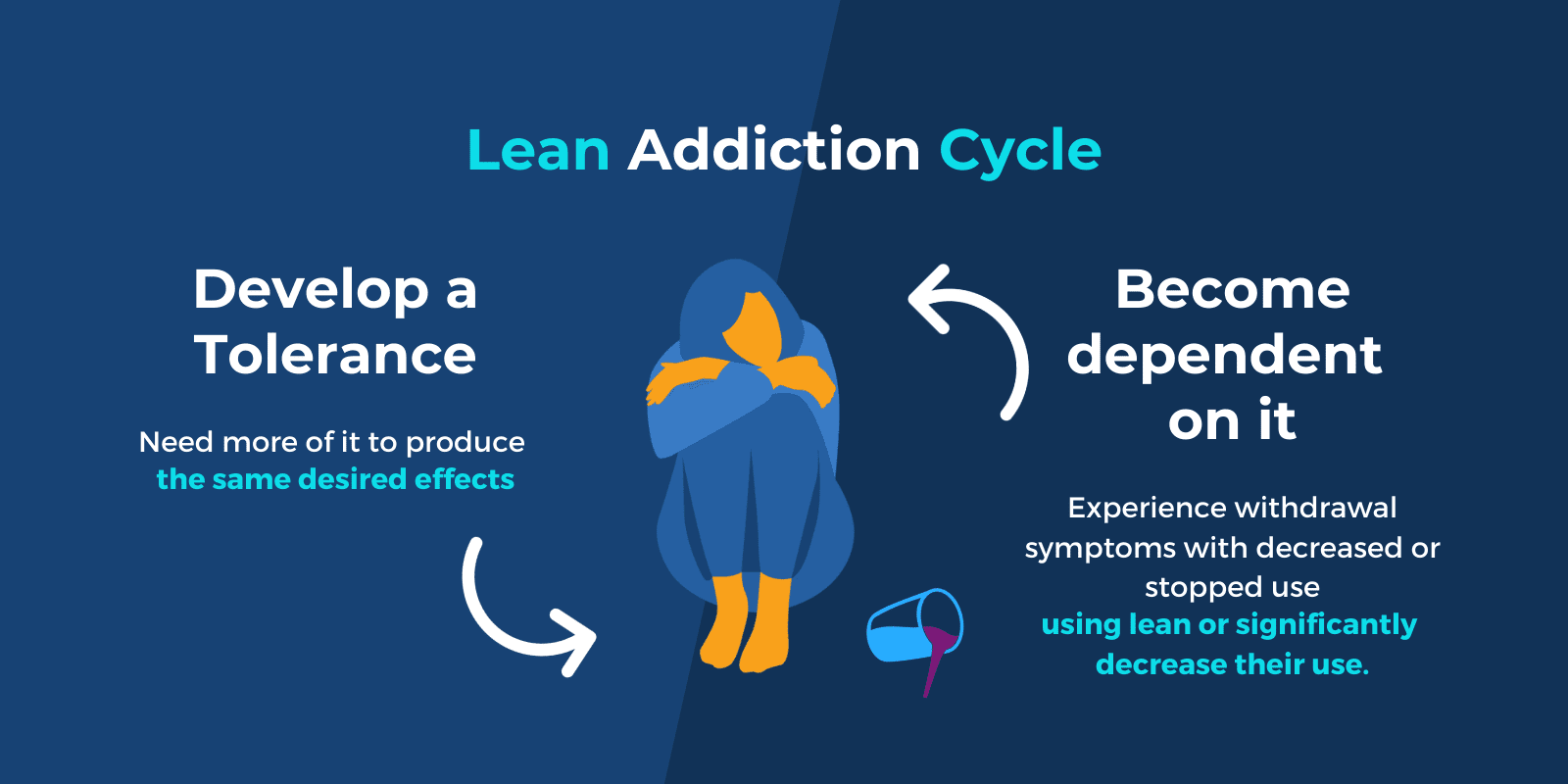
Effects of a lean withdrawal can include:
When a person enters treatment with a dependence on lean, they will need to go through detox.
To know if a person needs detox from lean, they should seek help from a medical professional.
A person should consult with their healthcare provider or a medical professional about detoxing from lean.
Withdrawal symptoms may be severe at times, so it is important to have proper medical supervision to manage symptoms safely.
To help manage withdrawal symptoms that may come from lean, medications like Methadone and Buprenorphine work by blocking the effects of opioids and minimizing withdrawal symptoms.
Codeine is an opioid that is used as a pain reliever for mild and moderately severe pain.
It is also sometimes combined with other medications to reduce coughing.
When codeine is used as a pain treatment, it changes the way the nervous system responds to pain, and when it is used for coughing, it decreases activity in the part of the brain that contributes to coughing.
Codeine is also sometimes combined with acetaminophen for cough and cold medication.
Promethazine DM has a combination of promethazine and dextromethorphan.
DM, which stands for dextromethorphan, is a non-narcotic cough suppressant, and promethazine is an antihistamine that treats allergies.
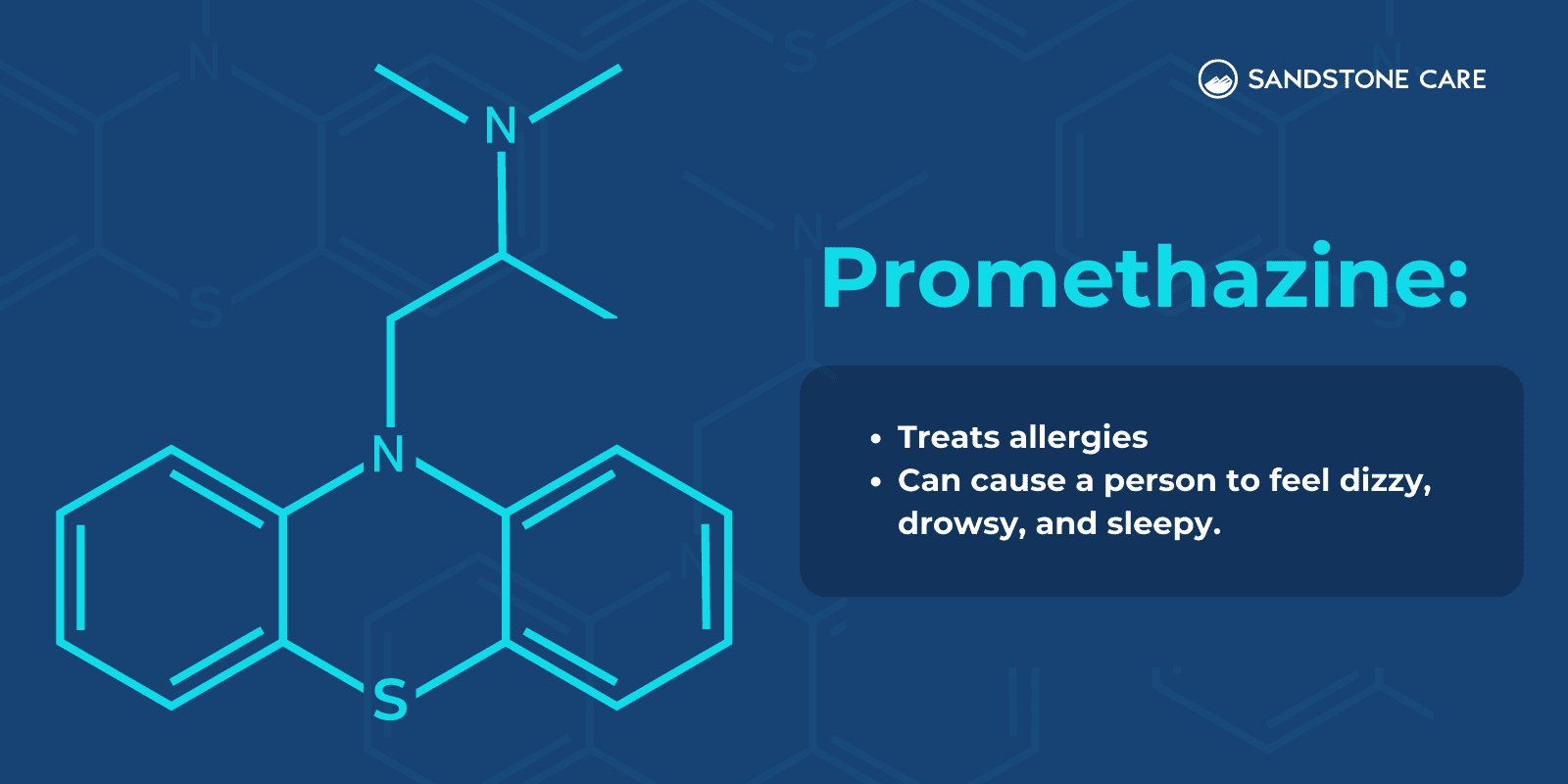
Promethazine can cause a person to feel dizzy, drowsy, and sleepy.
It is recommended not to drive a car or operate machinery until you know how it affects you and after consulting with your doctor.
Additionally, when you take promethazine with other drugs, it can cause severe drowsiness that is more extreme and lasts longer than normal.
Mixing promethazine with other drugs also increases the risk of adverse effects and overdose.
Dextromethorphan is used to temporarily help relieve cough that is caused by conditions like the common cold or flu.
Dextromethorphan belongs to a class of medications known as antitussives and works by decreasing the activity in the area of the brain that triggers coughing.
People sometimes mix cough syrups containing dextromethorphan into their lean.
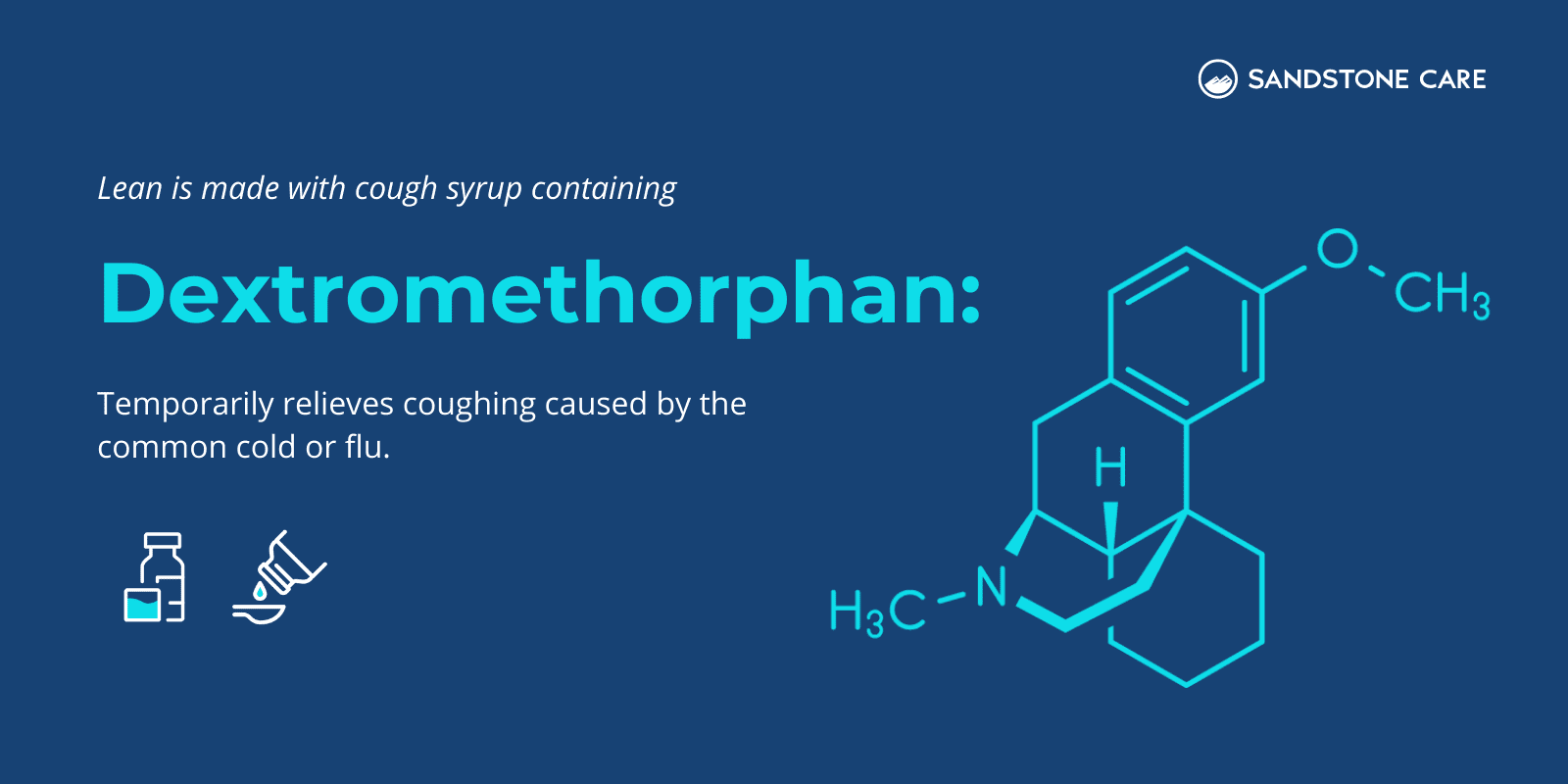
The best treatment for lean addiction is the one that fits the individuals needs the best.
There are a variety of treatment options available for lean addiction, including inpatient treatment, outpatient treatment, and support groups.
Treatment for lean addiction starts with detox to help the body safely get rid of the substance.
Treatment for lean addiction commonly involves medication in combination with psychotherapy or talk therapy to help a person understand the connection between their thoughts, feelings, and behaviors and to help them build healthy skills and coping mechanisms.

The level of care a person needs for a lean addiction is entirely dependent on their needs.
What works for one person may not be what works for another.
Usually, a person will have to go through a medically-supervised detox to help them safely manage their withdrawal symptoms.
A person who is in need of a high level of structure and support may benefit from inpatient or residential care.
For someone who may require a little more flexibility but still needs care and support, outpatient treatment may be beneficial, like day treatment or intensive outpatient treatment (IOP).
To figure out what level of care is best, reach out for professional help to guide and create a plan of action.
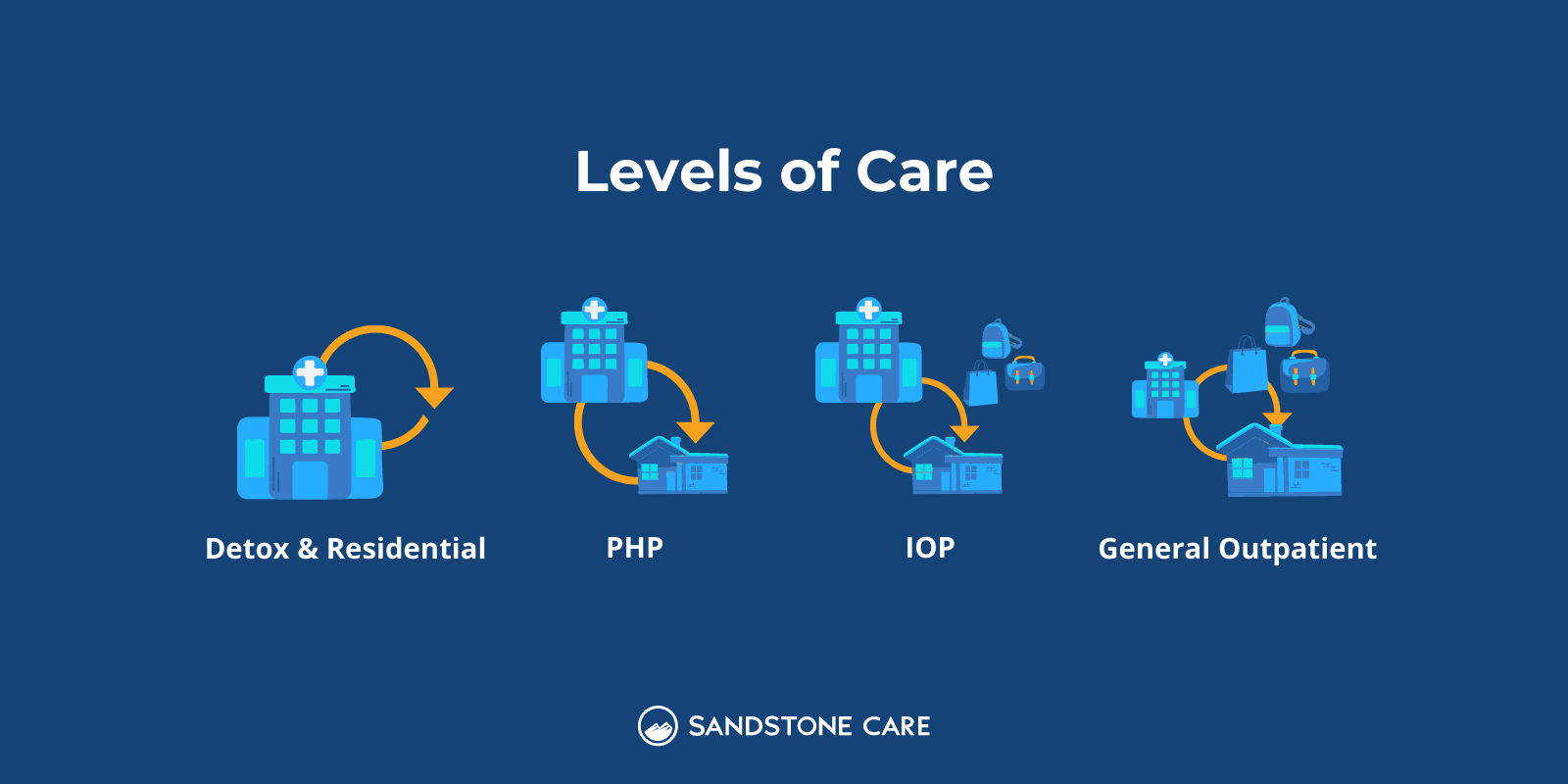
Sometimes, it can be hard to know if a loved one is facing challenges with substance abuse and addiction.
Some signs to look out for when it comes to lean addiction can include:
If you believe a loved one may be facing challenges with lean addiction, talk to them and seek professional support.
Educating yourself and learning more about lean addiction can help you better understand how to help.
Some people mix melatonin into their lean to make them more sleepy.
However, mixing codeine and melatonin can cause interaction and increase side effects such as drowsiness, dizziness, and confusion.
Additionally, combining substances can make the effects more unpredictable and put a person at a higher risk of complications like respiratory depression, overdose, and in some cases, can become life-threatening.
Despite its negative effects, lean is still being used today.
It is important for people, especially teens and young adults, to understand the dangers and risks of lean to prevent lean use and the risks that come along with it.
It is also important to recognize the impact that song lyrics have on young people when they talk about, and even sometimes glorify, lean use. Making lean sound appealing can put young people in danger and possibly compel them to try it themselves.
The word “lean” in a text may be referring to a drink concoction made of codeine, promethazine, soda, and candy.
Opiates like codeine can show up on certain drug tests.
However, it does depend on what drug test is being used.
For example, urine tests are a fast and effective testing option but typically look back on a shorter amount of time.
Lean is made by combining codeine and promethazine with cough syrup, hard candy, and soda.
Some people also mix lean with other ingredients, like alcohol or melatonin, which increases its health risks and can be very dangerous and, sometimes, life-threatening.
The effects of lean usually start to kick in about 45 minutes to an hour after taking the first drink.
A person may feel the effects of lean for up to 6 hours after first consuming it.
The length of time it takes for lean to work can depend on a variety of different factors, which may include a person’s age, weight, how often they drink lean, or how much they drank.


Lean is highly addictive and consuming lean can become life-threatening. It is important to seek help for lean addiction. Sandstone Care is here to support teens and young adults with mental health and substance use disorders.